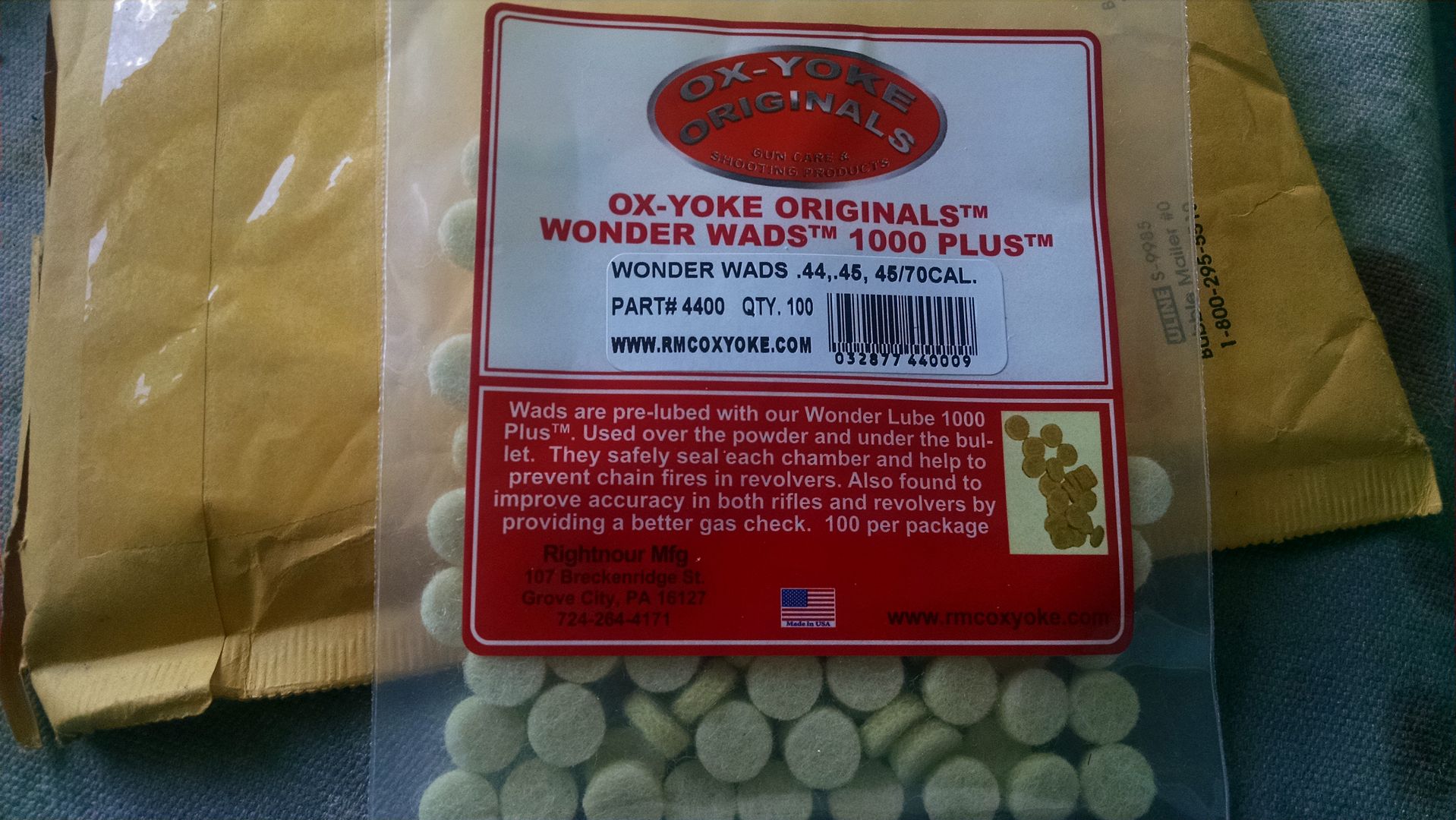Bishop Creek
New member
I'm with Driftwood on this one. Got my first cap and ball back in 1969 when there were no Wonder Wads, slathered Crisco all over the top of the balls, what a greasy mess! Had my one and only chain fire back then (with a battered 1851 brasser). I have been using wads since they were introduced in the late '70s and have never looked back. Cleaner to shoot and keeps fouling down in the barrel allowing more shots before cleaning.

